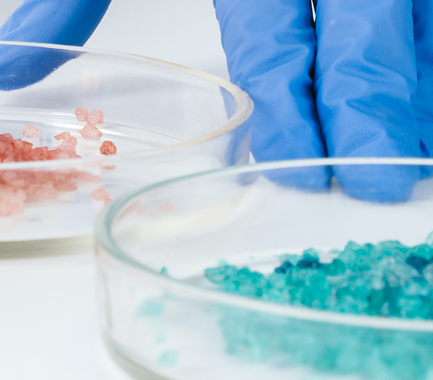Your contact
PENPET-Team - Hamburg

Christoph Meister
Sales
Tel. +49 (0) 40 - 675 7 99 30
sales@penpet.de
Get in touch with us.
Methyl Isobutyl Ketone (MIBK)
Methyl Isobutyl Ketone (MIBK) is an organic compound that belongs to the ketones and is an important solvent for the chemical industry. The substance is produced from acetone in a three-step process of aldol condensation, dehydration and hydrogenation via the intermediates diacetone alcohol and mesityl oxide. Natural methyl isobutyl ketone is found in small amounts in numerous plant and animal products.
Among other things, the compound is used as a polar solvent in the production and processing of rubber, paints, varnishes, resins and nitrocellulose. It is also used in the electronics industry and as a solvent for the tear irritant CS gas. Methyl isobutyl ketone is also used as an extractant for metals and as an intermediate for further synthetic processes in organic chemistry.
At PENPET you get methyl isobutyl ketone (MIBK) of the highest quality - from a reliable partner who will also meet your requirements in the long term. We look forward to receiving your inquiry for an individual offer. Prompt delivery of the liquid compound can be made in packages with different weights.
CAS no. 108-10-1
EINECS no. 203-550-1
Molecular formula: C6H12O
Synonyms: MIBK, MIK, isobutyl methyl ketone, 4-methyl-2-pentanone, 4-methylpentan-2-one, methyl(beta-methylpropyl)ketone, hexone, isopropylacetone
Areas of application: Solvents for varnishes, paints, resins, rubber and nitrocellulose, extractants for metals, intermediates for chemical synthesis
More Information
Methyl isobutyl ketone (MIBK) is a branched ketone. The chemical structure of the compound is expressed in the alternative name 4-methylpentan-2-one. The molecules of the substance consist of a five carbon atom hydrocarbon chain, the second carbon atom of which has a carbonyl group and the fourth carbon atom has a methyl group. Due to the functional group of the ketones, methyl isobutyl ketone has a high electrical polarity, which explains the suitability of the compound as a solvent.
Under normal conditions, methyl isobutyl ketone (MIBK) exists as a liquid compound with a pleasant odor described as fruity. The colorless liquid is volatile. It changes into the gaseous state when heated to 116 °C and solidifies to a solid when cooled below -80 °C.
Methyl isobutyl ketone is only poorly soluble in water. Undissolved amounts of the compound float on the water due to their lower density. In contrast, the substance is very soluble in numerous organic solvents such as diethyl ether, methanol, ethanol, benzene, chloroform and acetone.
Methyl isobutyl ketone (MIBK) is chemically stable when stored as directed in an airtight container. In contact with the oxygen in the air, the compound can form explosive peroxides. The substance reacts violently with strong oxidizing agents, strong reducing agents, aldehydes and nitric acid, generating a lot of heat. When storing methyl isobutyl ketone, it should also be noted that the compound attacks aluminum, copper, rubber and many plastics.
Methyl isobutyl ketone is a combustible and highly flammable liquid. The vapors of the compound can also form explosive vapor-air mixtures with the ambient air. Being heavier than air, the vapors can spread on the ground unnoticed. To avoid dangerous remote ignition, methyl isobutyl ketone should therefore be kept far away from possible sources of ignition such as open flames, hot surfaces, mechanically generated sparks and electrostatic discharges. Hazardous gases such as carbon dioxide and carbon monoxide are produced during combustion and thermal decomposition of the substance.
Methyl isobutyl ketone (MIBK) is an irritant hazardous substance according to the GHS classification. On the skin, the compound triggers redness, degreasing and painful inflammation. Affected body parts should be washed thoroughly with water and soap. If irritation persists, dermatological treatment should be carried out. Contact with methyl isobutyl ketone can cause painful irritation and profuse tearing in the eyes. The affected eye must be rinsed carefully under running water and then examined by an ophthalmologist.
Inhalation of vapors or aerosols of the substance may cause respiratory irritation, nausea and headaches. Ingestion of methyl isobutyl ketone can cause painful irritation of the mouth, esophagus, and stomach lining, as well as gastrointestinal symptoms such as nausea, vomiting, and diarrhea. If larger amounts of the compound are absorbed, dizziness, drowsiness, intoxication, unconsciousness, respiratory paralysis and disturbances in the function of the heart, liver and kidneys can also occur. If poisoning with methyl isobutyl ketone is suspected, immediate medical treatment must be arranged at the scene of the accident.
With regard to possible damage to aquatic organisms, methyl isobutyl ketone has been assessed as slightly hazardous to water. The compound must therefore not enter water bodies, the soil or wastewater. The local authorities must be informed of the escape of larger quantities of the substance into the environment. Special regulations apply to the transport of methyl isobutyl ketone.
